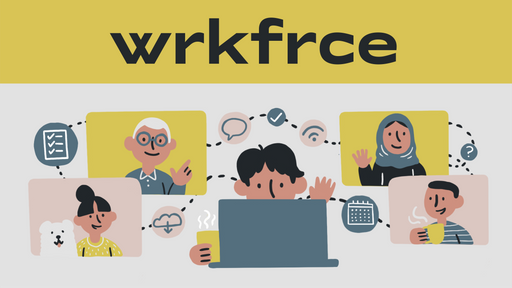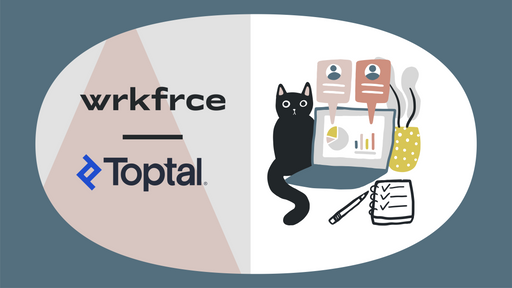Summary: The Workplaceless’ Placeless Playbook
by Sarah Archer

The global rise of reactive remote work in 2020 spawned a proliferation of playbooks published by many of the leading remote-first companies, which open-sourced the knowledge they’ve gained from years of successful fully remote operation to help other businesses follow their lead. There’s only one problem: These playbooks are loooooong. So wkrfrce has condensed them into abridged versions—CliffsNotes, if you will. Digital nomad Sarah Archer, a passionate advocate of remote and flexible work, has combed through thousands of pages of remote-first strategies to deliver the most unique, most useful, most actionable insights to help make working remotely work for you.
Workplaceless, a consultancy that trains professionals and companies how to operate remotely, stands firmly behind its claim that unexpected remote work is not the same as sustainable remote work. But in the wake of the coronavirus pandemic, millions began working from home with little notice or preparation. Some companies will return to on-site work, but many will continue to use a significant remote workforce.
For the Workplaceless team, the concept is simple: If a company puts off adapting to working virtually, its long-term success could be at risk.
In response to the pandemic, Workplaceless created a guide to help businesses transition to a sustainable remote-work model. The company’s wider range of remote secrets is available to those who sign up for a consult session, but below is a brief play-by-play for how to approach working remotely when you don’t have a lot of time to prepare.
Adjust to Remote Work Through Training
If your team moved into working remotely with minimal notice, now’s not the time to skimp on the training. More than ever, employees need to see leadership step up and create an emergency plan that will help everyone adapt quickly to working remotely.
Workplaceless’s remote work training courses highlight a number of ways you can hit the ground running in a new remote environment:
- Designate a remote-work point person
Assign a manager the responsibility of making and communicating remote-specific decisions. That person will take ownership of the company’s transition and be available to answer employee questions. - Show trust and empathy
Moving suddenly to remote work is stressful. Managers should address this head-on by holding meetings that allow employees to express their personal and work-related concerns while simultaneously helping them generate solutions. - Offer company-wide resources
Not everyone has access to the same resources outside the on-site office. Level the playing field by making sure that everyone has strong and reliable internet access, account passwords, necessary equipment, and proper security measures in place. - Assess your communication tools
Impromptu desk-side meetings won’t fly anymore, so you must offer the tools for employees and managers to connect virtually. Consider options that will keep employees connected (but not overwhelm them), like Officevibe, Spacetime, Zoom, and Slack. - Use meetings strategically
Meetings should focus on decision-making, collaboration, and connection. Always send an agenda beforehand and rotate the designated notetaker to ensure that you get a range of perspectives and that no one gets stuck with the task for every meeting. Also consider recording meetings and sending a video via Loom. Finally, use your meeting time carefully—don’t overload your team, and don’t be shy about canceling a meeting altogether if the team doesn’t need to be there in real time. - Document and communicate decisions
Remote teams don’t plan or make decisions in conference rooms, so you need to create a paper trail that documents all of these discussions, however they occur. Not only will this documentation lessen confusion, but it also will help onboard new team members. Workplaceless recommends Trainual as its preferred hub for keeping everything in one place. - Invest in collaboration tools
Building on the above, replace your conference room whiteboard brainstorming with tools that facilitate online visual collaboration like Klaxoon, MURAL, or Box. - Upskill managers
Your managers are skilled at managing their team, but don’t assume they automatically know how to do their job in a remote environment. Like everyone else on the team, they need to learn. Empower them to adapt their management style to a virtual environment—virtually—through a training program like Leadplaceless.
Develop a Remote-Work Course of Action
After you address the logistics and immediate needs that arise when transitioning to remote work, you need to develop a personalized action plan for your entire company. Workplaceless offers the following recommendations.
- Check in regularly
Isolation is a challenge for remote workers, especially for those who have moved quickly to emergency remote work. You can help alleviate the isolation by checking in on your employees consistently; use tools like Elin.ai, Donut, and Wulu to encourage others to do the same. - Create a remote work policy
Every company is unique, so create a personalized remote-work policy that benefits your employees and meets your company’s business goals. Your policy should include essentials like when and how you expect employees to work, communication and security protocols, and expectations about workers’ physical environment. - Avoid micromanaging
Overcommunication may be necessary when you first go remote, but if it continues, your employees might interpret it as micromanagement. You can avoid this perception by clearly defining—up front—your expectations for direct reports, such as sharing status updates on Slack and consistently hitting deadlines. Your results will be much better than if you get into the habit of always reaching out with unexpected one-offs. Consider having your direct reports use software like Weekdone to track and report on goals, so that your follow-ups are for supporting or rewarding your team—not asking, “Are you done yet?” - Align on the organizational action plan
Of course, everyone will face different challenges when transitioning to remote work. As soon as possible after your move to remote work, connect with leadership across all departments to discuss an action plan for training, communicating, reviewing performance, resolving conflict, managing change, and maintaining culture. And yes, you should document the results and share them with your team.
Maintain Remote Process (Even When You’re Back in the Office)
Workplaceless’s 2020 Remote Work Training Report found that 55 percent of employees said they likely will continue to work remotely even when they’re allowed back in the onsite office.
If you’ve spent time developing an effective process for working remotely, don’t scrap that when at least some of you are in person again. Instead, let these improvements shape the way you work, which is likely to consist of a mix of on-site andremote work, indefinitely. Workplaceless suggests these actions:
- Deploy a company-wide survey
Ask employees about their experience shifting to remote work to help shape your remote-work policy. Questions should address employee mindset, infrastructure, and training. Also ask employees about their interest in a hybrid setup: Which tasks might they occasionally prefer to do on site? - Empower your HR teams
In stressful times, HR departments often receive the brunt of negative feedback, which can affect their mental health. Remember to support them with HR training and equip them with the tools they need to carry out their job. - Adjust your hiring strategy
Develop a hiring process with candid job descriptions and a defined workflow to attract and onboard remote talent. Try using a collaboration tool like MURAL to align your strategy across different teams. - Strengthen remote culture Schedule virtual Zoom meet-ups, create Slack channels to facilitate bonding, and pair buddies in different departments to continue building your culture whether you’re in the office or not.
- Offer consistent learning experiences
To build a sustainable remote-work environment, ensure that all employees have the same training and development that will lead them to interpret expectations in the same way. Build a streamlined internal course using software like Articulate, Versal, or Matrix LMS.
Workplaceless offers a number of courses to help companies and individuals feel comfortable with and work efficiently in a remote setting.
Interested in how other companies approach remote work? Our remote playbook series provides actionable tips from companies who have built their business, cultures, and people, all while working remotely.









